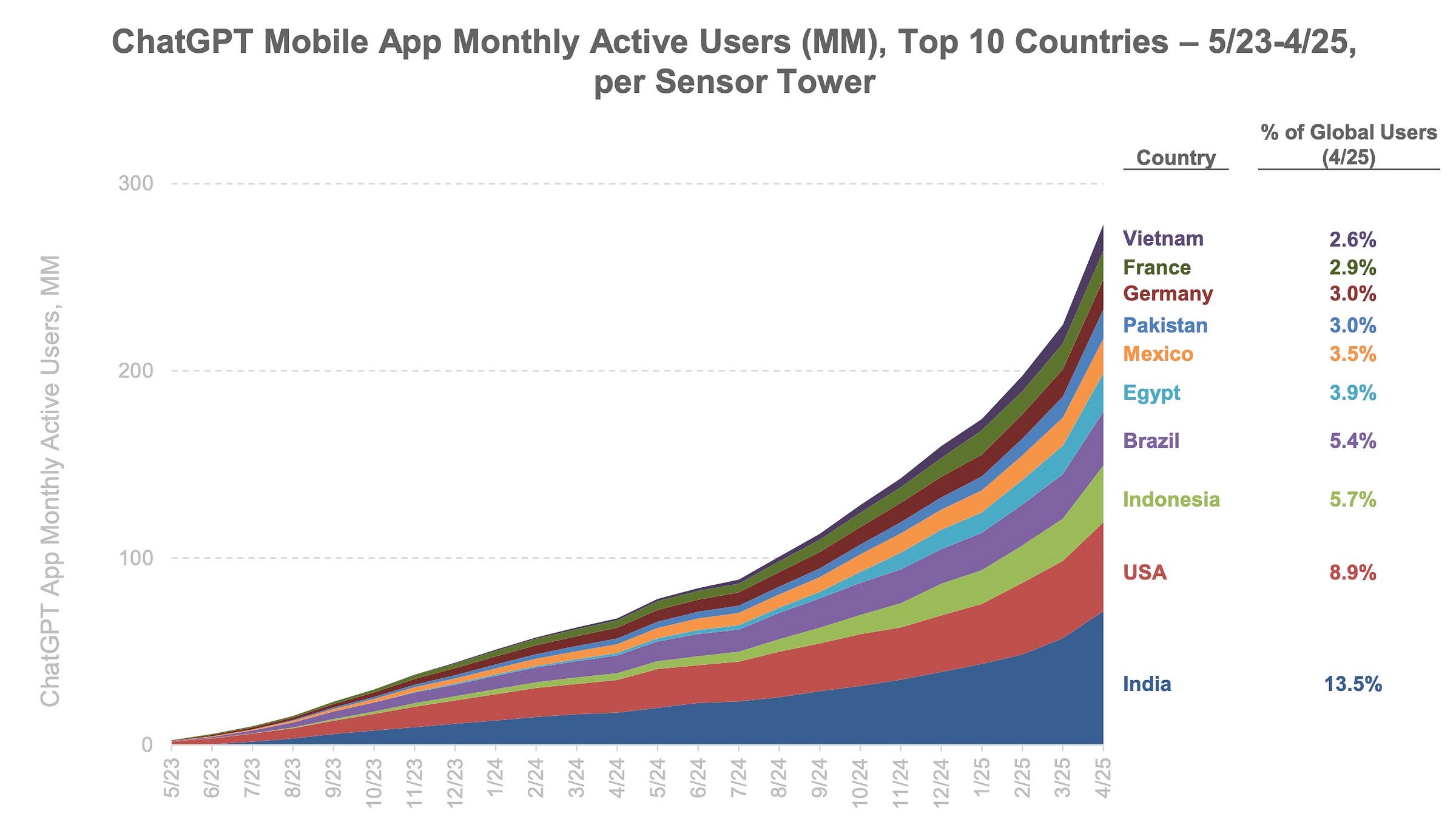The Great AI Land Grab Reaches Peak 'Free Lunch' in India
Perplexity's partnership with Airtel to give premium offering to 360 million customers is the largest distribution deal of its kind
Perplexity is executing a classic Silicon Valley playbook for user growth: India. The U.S. startup has partnered with Indian telecoms giant Bharti Airtel to give its premium Perplexity Pro service to 360 million customers for free for an entire year in what is the largest distribution deal of its kind globally.
This is no watered-down trial. The offer provides the full version of Perplexity Pro, a service that normally costs nearly $200 a year and gives users access to powerful AI models like GPT-4.1 and Claude Sonnet and Opus 4. The strategy specifically targets Airtel’s paying subscribers, one of India’s largest groups of commercially valuable internet users, in a market projected to surpass 900 million users in 2025.
The move underscores India’s position as the last great growth market for global tech giants. In the past 15 years, firms like Amazon, Google, and Meta, alongside venture capitalists and private equity, have poured more than $200 billion into the country, all chasing its vast pool of users and the businesses serving this population.
“We view India as a critical consumer market for adoption given over 945 million mobile phone users and relatively low levels of penetration compared to developed markets,” JPMorgan analysts wrote in a note Friday.
Perplexity’s move comes amid fierce competition. India is already the largest market for ChatGPT by mobile usage. India’s largest carrier, Jio Platforms, is reportedly in talks with OpenAI to offer a subsidized version of ChatGPT Pro to its own customers. This mirrors Perplexity’s earlier partnership with Deutsche Telekom to create an “AI Phone” in Europe. Google said earlier this week it would offer the premium version of its LLM, Gemini, to all students in India at no charge.
While foreign companies battle for entry, a different drama is unfolding within India’s domestic AI scene. The country is home to a vibrant ecosystem of over 4,500 AI startups, 40% founded in just the last three years. Their work is remarkably broad, spanning at least 27 distinct fields, from process automation to advanced medical imaging and even brain-computer interfaces.
Yet, for all this activity, India has struggled to produce a globally competitive large language model of its own. The country’s best-known models, such as Sarvam AI’s, are built using technology from foreign firms like France’s Mistral or are adapted from open-source software. No Indian model currently ranks among the world’s top 200.
While private AI investment in India reached $1.2 billion in 2024, it pales in comparison to China’s $9 billion and the U.S.’s $109 billion.
The country’s digital infrastructure is lacking, with its data centers making up just 3% of global capacity. The country also faces a severe brain drain of talent; a 2022 study found only one-fifth of India’s top AI researchers stay in the country, as most are drawn to better-resourced jobs in America. One researcher at Stanford said the “fear of missing out” would have been a major concern if he had stayed in India.
The Indian government is trying to counter these trends with a $1.2 billion national AI mission aimed at building domestic compute capacity and fostering indigenous models.


